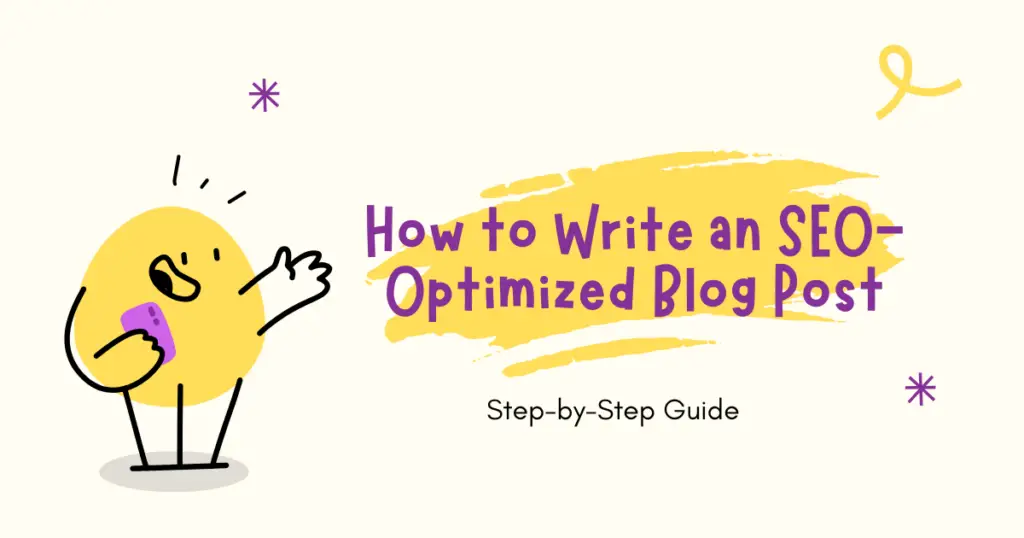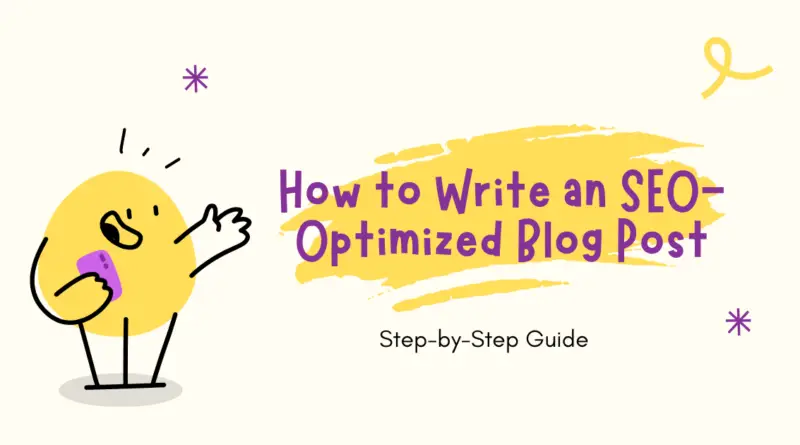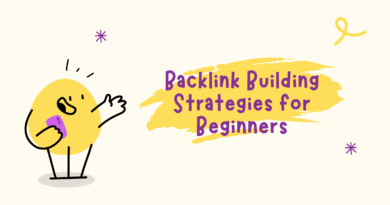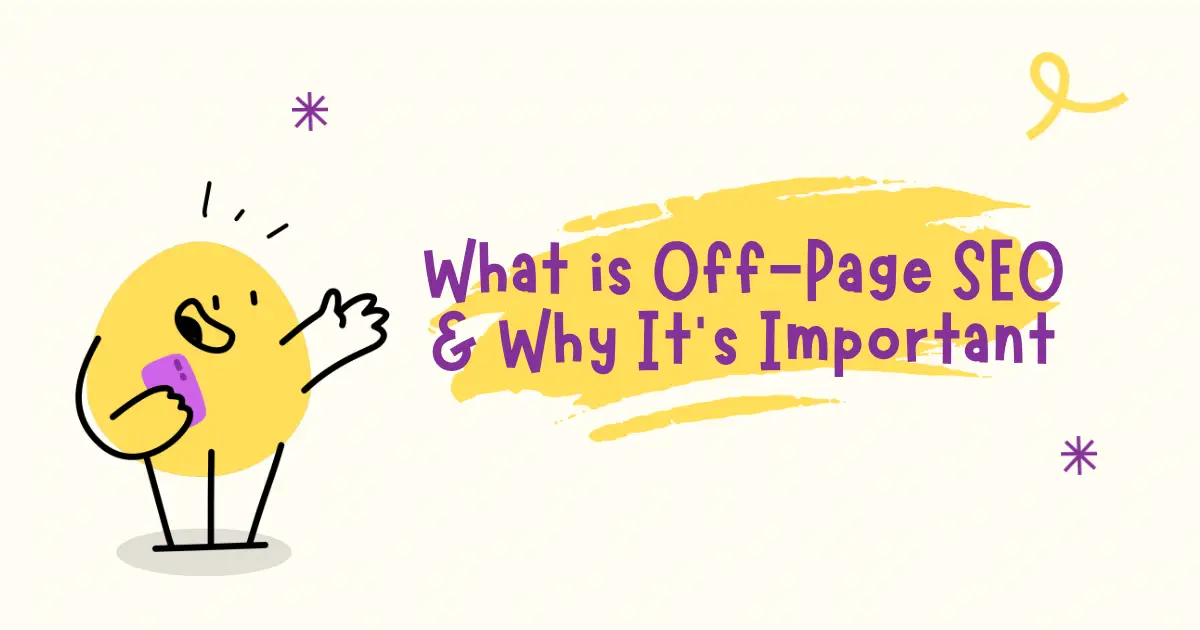How to Write an SEO-Optimized Blog Post (Step-by-Step Guide)
Ever wondered why your blog post doesn’t show up on Google, even after hours of writing and editing?
You’re not alone. Many content creators focus on writing great content, but forget about making it search engine friendly.
Writing for SEO isn’t about tricking search engines—it’s about helping your content get discovered by people actively searching for what you offer.
Let’s walk through how you can create a blog post that is both valuable to readers and loved by search engines.
What is an SEO-Optimized Blog Post?
An SEO-optimized blog post is one that’s written to rank well in search engine results pages (SERPs). It answers a searcher’s question clearly and thoroughly, while using techniques like keyword placement, formatting, and structure to make the content easy to read and discover.
Think of SEO like a signboard. The clearer your sign, the more people will find your store.
Step 1: Start with the Right Keyword
Everything begins with keyword research.
Your keyword tells search engines what your content is about and helps users find it.
Example:
If you’re writing about SEO blog writing tips, your target keyword might be:
how to write seo optimized blog post
blog writing for seo
How to Choose the Right Keyword:
Use tools like Google Keyword Planner, Ubersuggest, or Ahrefs.
Look for long-tail keywords. They’re more specific and usually easier to rank for.
Example: “How to optimize blog post for SEO” is better than just “SEO”.
Step 2: Understand the Search Intent
Once you have your keyword, think about why someone would search for it.
Are they:
Looking for how-to instructions?
Trying to solve a specific problem?
Searching for a checklist or best practices?
Scenario:
If someone searches “how to write a blog post that ranks on Google”, they probably want clear steps, examples, and maybe a downloadable checklist—not vague theories.
Tip: Type your keyword into Google and look at the top 3 results. What format do they follow? What questions do they answer?
Now build on that.
Step 3: Structure Your Blog Post for Readability
Search engines love organized content—and so do readers.
Here’s how to structure your post:
Use Proper Headers
H1 for your main title (used once)
H2 for subheadings (like you see here)
H3 for nested points under H2s
Break It Up
Avoid walls of text. Use:
Bullet points ✅
Short paragraphs
Images with alt tags
Include These SEO Elements:
Title tag: Include your main keyword
Meta description: Write a 150–160 character summary that encourages clicks
Slug (URL): Keep it short and keyword-rich (e.g.,
/seo-blog-writing-guide)
Step 4: Write with SEO in Mind—But for Humans First
The goal is to write naturally and include your keyword and related terms in the right places.
Where to Place Your Keywords:
In the title
Within the first 100 words
In at least one H2 heading
Scattered naturally throughout the content
In the meta description
In image alt text and filenames
Example:
Instead of repeating “seo blog post” 15 times, use variations like:
blog post SEO checklist
writing for search engines and users
on-page SEO for blog post
Avoid keyword stuffing. Google’s smarter than that.

Step 5: Make It Valuable and In-Depth
Google rewards helpful, thorough content that actually answers the searcher’s question.
If you’re covering how to write seo content, don’t just say “use keywords.”
Show how and why, and offer real-life examples or step-by-step actions.
Example Scenario:
Let’s say you’re writing a travel blog. Instead of just saying,
“Include keywords in your post,”
you could say:
“If you’re writing about beaches in Goa, include phrases like ‘best beaches in Goa’ or ‘Goa travel tips for beach lovers’ within your headings and image alt texts.”
Key Takeaway:
Provide examples, templates, screenshots, or tools whenever possible. That’s what turns a good blog into a great one.
Step 6: Use Internal and External Links
Internal links help both users and search engines navigate your site.
They also keep readers on your site longer.
Example:
If you mention “keyword research,” link it to another blog post that explains how to do it.
External Links
Link to credible sources to build trust.
Example:
“According to Google’s SEO starter guide, clear headings and mobile-friendly design improve visibility.”
Tip:
Use Dofollow links for trusted sources, and ensure broken links are regularly fixed.
Step 7: Optimize Your Images
Images make your blog engaging and easier to digest, but they also affect SEO.
Here’s what to do:
Compress images to improve page speed (use TinyPNG or ShortPixel)
Use descriptive filenames (e.g.,
seo-blog-example.png)Add alt text using your keyword naturally
Why it matters:
Google can’t see images—it reads alt text to understand what the image is about.
Step 8: Focus on Readability
Even if your content is informative, no one will read it if it’s hard to understand.
Make it Easy:
Use short sentences
Avoid jargon or overly complex words
Write like you’re explaining it to a friend
Use transition words like “however,” “meanwhile,” “for example”
Readability Tools:
Try Hemingway Editor or Grammarly to polish your writing.
Step 9: Add a Compelling Meta Description
Think of the meta description as your blog’s sales pitch on Google.
It should:
Be under 160 characters
Include your main keyword
Clearly tell the reader what they’ll gain
Example:
“Learn how to write an SEO-optimized blog post with simple steps, real examples, and practical SEO tips to boost your content’s visibility.”
Step 10: Track Your Results
After publishing, keep an eye on how the blog post performs.
Use:
Google Analytics to monitor traffic, bounce rate, and dwell time
Google Search Console to track impressions, clicks, and rankings
Scenario:
If a post is ranking but not getting clicks, your title or meta description may need improvement.
If it gets clicks but not conversions, the content may not match user intent.
Most Common Questions (And Straightforward Answers)
How many words should a blog post be for SEO?
There’s no perfect number, but posts around 1,200–2,000 words tend to perform well for competitive keywords.
What matters most is that you fully answer the reader’s query.
What is keyword density in blog posts?
Keep it natural. A 1–2% keyword density is a safe range.
More important than frequency is context and relevance.
How often should I update blog content?
At least every 6–12 months. Refresh old stats, update broken links, and optimize with new keywords if needed.
Final Tips: Writing SEO Content That Actually Ranks
Here’s a quick recap of the essentials:
✅ Choose keywords based on search intent
✅ Structure your blog with clear headings and short paragraphs
✅ Use internal and external links
✅ Focus on readability and flow
✅ Track performance and update regularly
✅ Answer user questions and include examples or scenarios
Key Takeaways
Writing for SEO doesn’t mean writing just for search engines—write for people first
The right structure, formatting, and keyword usage can make or break your rankings
Consistent updates and performance tracking keep your blog alive and relevant
Want to improve your blog’s SEO even further? Start applying these tips today and let the content do the work—for both your readers and search engines.



